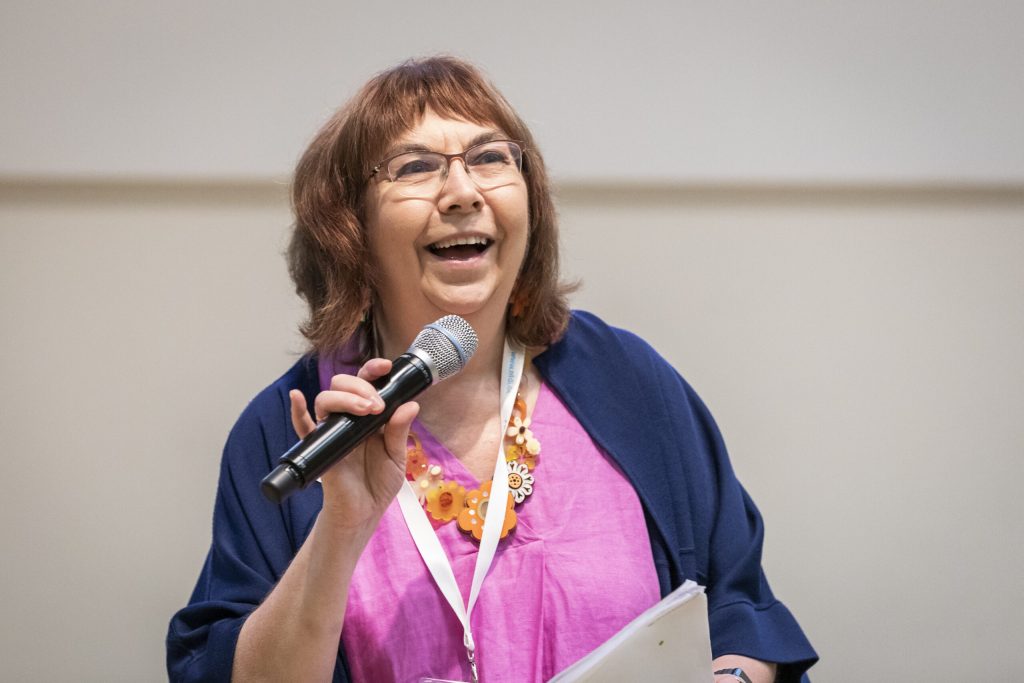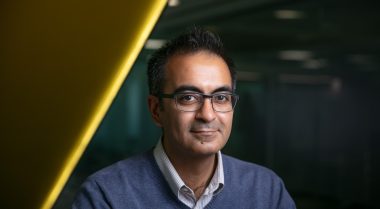Carole Goble: Breaking barriers and bringing talent together in computer science
8 March 2024 | Author: Carole Goble, Professor of Computer Science
For International Women’s Day, Carole shares insight into her career, emphasises the value of building your network and provides tips for women looking to become a leader in the tech world.
Carole Goble CBE FREng FBCS is a Professor of Computer Science at the University of Manchester. She is Joint Head of UK Node of ELIXIR, the European Research Infrastructure for Life Science Data, and joint lead of the Federated Analytics programme for HDR UK. Carole was also a Keynote Speaker at our HDR UK Conference this week, where her presentation focused on ‘learning from 10 years of European scale infrastructure wrangling’.
This International Women’s Day, Carole shares insight into her career journey and her advice for women looking to explore the world of computer science.
Can you provide an overview of your career, to this point?
I’ve been a computer scientist since I was 16. I achieved my A-level in computer science before microcomputers, so I was programming mainframe computers at school. I then went to the University of Manchester to do computing and joined one of the biggest computer science departments. I was on the first degree they ran that focused on software, as I wasn’t interested in building hardware.
I stayed in Manchester and specialised in knowledge management, data management, and metadata and computational analysis, and how we do distributed computing. I started in the area of health data, looking at how you do knowledge management and ontologies in primary care systems.
I started working in biosciences in the 1990s, looking at how to do integration across databases in life sciences and how to stitch together resources using computational workflows and ontologies. I ran a one of the flagship UK eScience projects in the early 2000s to build a digital infrastructure for life science data, which we’re still doing. The proposal that I wrote was one of the early examples of what we’re now achieving through ELIXIR, the digital research infrastructure for life science data of which I’m now the co-head of the UK node.
As as a computer scientist, I was one of the founders of the Semantic Web community and of computational workflows, and I was always interested in how we share information. I have always worked with real users and real problems, and would argue now that I’m a “translational computer scientist”. That means I spend as much time working out how to translate what we’re doing into practice as a software engineer, as I do as a computer scientist. I’m not really interested in how you do proof of concepts or writing esoteric papers, I’m interested in how you deliver real solutions and how you make them work in practice. I’ve worked in digital infrastructure for the last 25 years, which does exactly that.
I’ve worked in all sorts of things, not just life sciences; I’ve been involved in a variety of projects that include elements of astronomy, social sciences, biodiversity, and more. I would say now I’m a “People Wrangler” because my main job is to encourage people to build systems and to work together, which is something I talked about at HDR UK’s Conference this week. I’m focused on bringing people together in order to build a digital infrastructure.
Why did you pursue a career in computer science? And what about the world of health data science drew you in?
The reason why I became interested in computer science was because I saw a computer on the television and, similarly to many across my generation, was probably influenced by Star Trek! I wanted to build the infrastructure that I saw and thought it was really cool. This stuck with me, which is why I did computer science at school to programme ICL 2900-Series mainframes in the classroom, which is pretty remarkable when you think about it!
From the point of view of health data, I became involved in HDR UK due to my experience in bringing information together at scale, across huge pan-national digital infrastructure, and delivering computational analytics in practice. As part of my role at ELIXIR UK, I’m working in a digital infrastructure with 25 countries in it, including around 250 organisations and 500 services and resources. I’m delighted that assembling a technology ecosystem is a central and significant part of HDR UK.
In your experience, do you feel that computer science is a male-dominated specialty?
When I first started, there wasn’t really a gender gap in computer science because nobody knew much about the subject but over time, that gender disparity became more clear. When micros went into schools, it became a “boy’s topic”. I had an all-girls education from the age of 11 to 18, so I didn’t know computing was “supposed to be for boys” and never let that worry me.
I was very active in the Women in Computing movement in the 1980s and 90s because we could see that it was becoming male-dominated. The intake of women in the field had decreased to around 5% at that time. It has been climbing up but still to this day in infrastructure meetings, I’m often the only woman. I’m certainly often the only woman in leadership, just because it has taken so long and been a challenge to rectify this imbalance. It is getting better, but it is still a challenge.
What are some of the most rewarding moments you’ve experienced in your career so far? What are you most proud of?
I’m proud of assembling teams of people in order to deliver infrastructure, especially assembling my own team who are fantastic. And my colleagues – I have such great friends in science. Bringing together teams of people to build products that thousands of people use is very inspiring. Even the tools that no longer exist were still pioneering projects. We were one of the founders of the idea of scientific workflows and sharing computational workflows, which is now a movement. There were only a handful when we started and now, there’s around 335 systems.
Networking with people and creating networks of people is one of my biggest strengths because I know a lot of people in a lot of different disciplines. I’m like a ‘scientific matchmaker’ and it’s my joy to connect people all over the world. I work across many diverse communities, such as those in digital libraries, scholarly communication, policymaking, biodiversity, life sciences, social sciences, and more. This allows me to cross-integrate different disciplines and worlds of people, which is very rewarding.
Establishing the FAIR Principles, which I am one of the authors of, is a rewarding moment and is a real driver in open science and the work that we do. I’m also proud of the movement we’ve achieved where we’ve been looking at interoperability frameworks, which is about how you build objects, we call RO-Crates, to move information around. It has taken 14 years for the idea to gain traction but this has been adopted by thousands of people and has made a difference in how we do infrastructure development, scientific dissemination and knowledge sharing.
My main career highlights involve anything that really made a difference or influenced change. And that includes the students I taught. I bumped into some of my old undergrads at the HDR UK conference. You never know how much impact you can make with a few words at the right time. And well 10 years ago we started up ELIXIR UK and now we have 28 organisations and lead many flagship resources for European bioscience.
What piece of advice would you share for the next generation of women, who may be considering a career in computer science?
First, read ‘Nice Girls Don’t Get the Corner Office’ by Lois P. Frankel. And I did it. I got the corner office with beautiful windows, a sofa, a table, and coffee making facilities. It’s a brilliant book.
Secondly, build your network. Find mentors, make friends, find your people and don’t try to do it by yourself. You need to build a community around you that can support you. This can be your research community who will help you deliver your vision, but it’s also people who are going to support you as a person.
And lastly, you’re going to have to work extremely hard. Success doesn’t just happen, you have to work hard for it. Be brave. Take risks. I’ve been lucky – I spotted the next trend and made the wave and rode it. That’s such a buzz and fun. And have fun!




